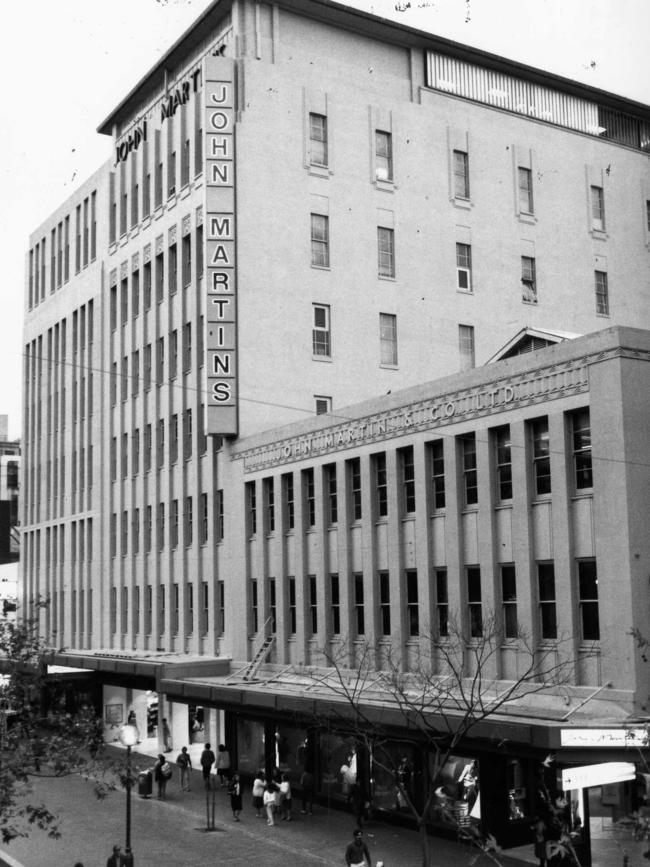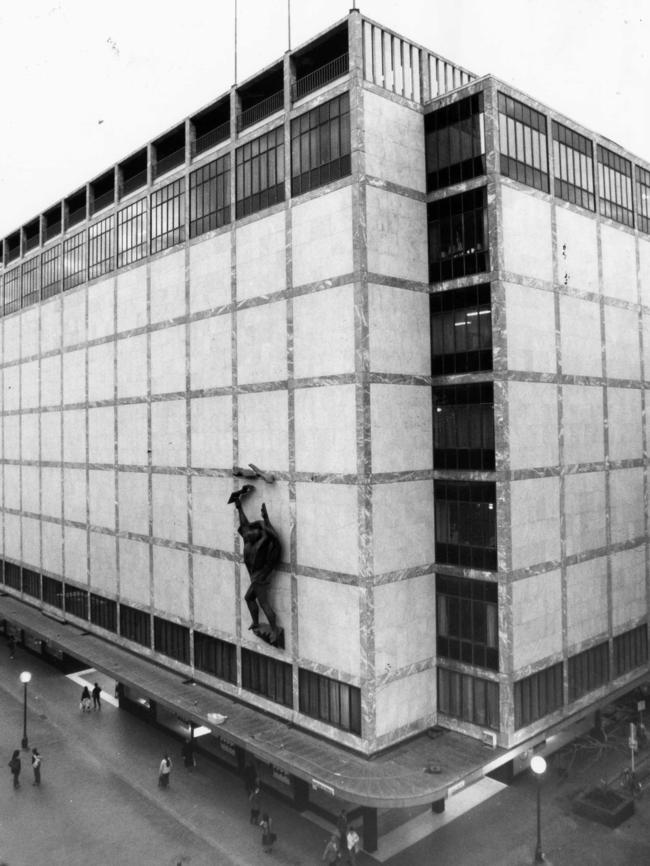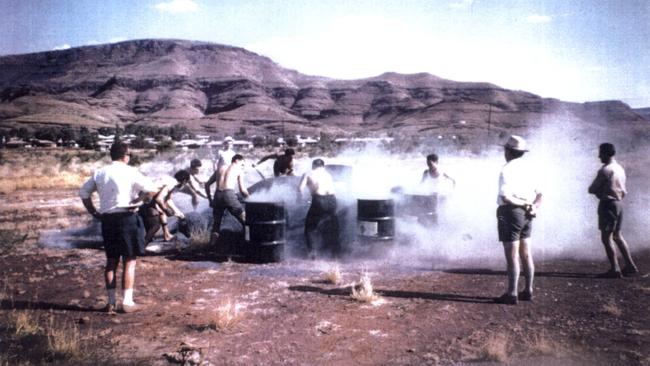Deadly blue asbestos sprayed in 170 SA buildings by contractor – but no database to record if it’s still there
Deadly blue asbestos was sprayed in at least 170 South Australian buildings in the 1960s. But there’s no central database recording if it’s still there.
- Asbestos sprayed through Rundle Mall department stores
- Make the most out of your Advertiser subscription
Highly toxic blue asbestos was sprayed by a contractor in 170 South Australian buildings during the 1960s, court documents have revealed.
A list of contracts undertaken by Bradford Insulation (BI) Contracting Pty Ltd shows the buildings included the former Royal Adelaide Hospital, Queen Elizabeth Hospital, Modbury Hospital, University of Adelaide, Flinders University, St Peter’s College, Prince Alfred College, Reserve Bank, department stores, and various banks.
Other locations included the former The Advertiser building on King William St, Adelaide Railway Station, General Motors Holden at Elizabeth, Art Gallery of SA, Wayville Showgrounds, Repat Hospital, Norwood Oval, Botanic Gardens, Elizabeth Town Centre and Adelaide Central Market.
The Advertiser reported this week how workers in three Rundle Mall department stores – David Jones, Myer and John Martin’s — had successfully sought compensation after developing fatal illnesses from asbestos exposure, including mesothelemia.


The District Court has heard how Bradford Insulation ordered hundreds of bags of blue asbestos, known as crocilodite, from a Plympton company, Ingham Plaster Pty Ltd, which was mixed with cement and sprayed as a fire retardant.
The blue asbestos was transported to Adelaide from the Wittenoom asbestos mine in the Pilbara, Western Australia.
Former Bradford Insulation employees have given evidence that large amounts of blue asbestos regularly failed to adhere to metal beams while being sprayed through hoses.
They also have told a District Court judge the asbestos would become friable with age, breaking off or turning into dust.

Attempts by The Advertiser to determine which of the 170 buildings sprayed by Bradford Insulation still contained asbestos were unsuccessful because there is no central public register.
Asbestos Diseases Society president Peter Photakis said there needed to be a database listing commercial and resident buildings containing asbestos.
“Any building built before 1980 is likely to still have asbestos in it,” Mr Photakis said.
“You are talking about schools, hospitals, public departments. It’s still out there and people need to be able to access information so they can be educated about the risks.
“A lot of people don’t even know what asbestos looks like.”
Mr Photakis said state government agency SafeWork SA had regulatory responsibility for asbestos – and needed to establish a central database.
“It is estimated 200,000 people are going to be affected by asbestos in coming years and we need to take a forward step if we want to save lives,” he said.
Asbestos Safety and Eradication Agency chief executive Justine Ross said asbestos was “still widespread in the Australian built environment”.
“The risk of exposure is still present in public buildings and the residential environment – but it is not a risk that the public is well versed to,” she said.
“Unfortunately, we will continue to see people being diagnosed with asbestos-related diseases from past exposure, and there will continue to be court cases in response to this.”
Ms Ross said her agency was working with state and territory governments, local councils and the non-government sector “to roll out the national strategic plan for asbestos awareness and management, with one of the priorities being raising awareness, to ensure we do all that we can to prevent any further exposure”.
MORE NEWS
Asbestos stayed in David Jones for 20 years after warning
Council boss writes his own salary package
Giant water tank needs council permission
Ms Ross said asbestos exposure “is not confined to the past. Asbestos exposure continues today”.
“We are nearly in 2020 and the dangers of asbestos are still not widely appreciated by much of the Australian community,” she said.
A SafeWork SA spokeswoman said the agency “takes the management of asbestos very seriously”.
“There are strict regulations relating to the management and control of in-situ asbestos including national codes of practice,” she said.
“SafeWork SA issues licences for the removal of asbestos and undertake compliance and enforcement activities to ensure any removal is in accordance with the regulations.”
